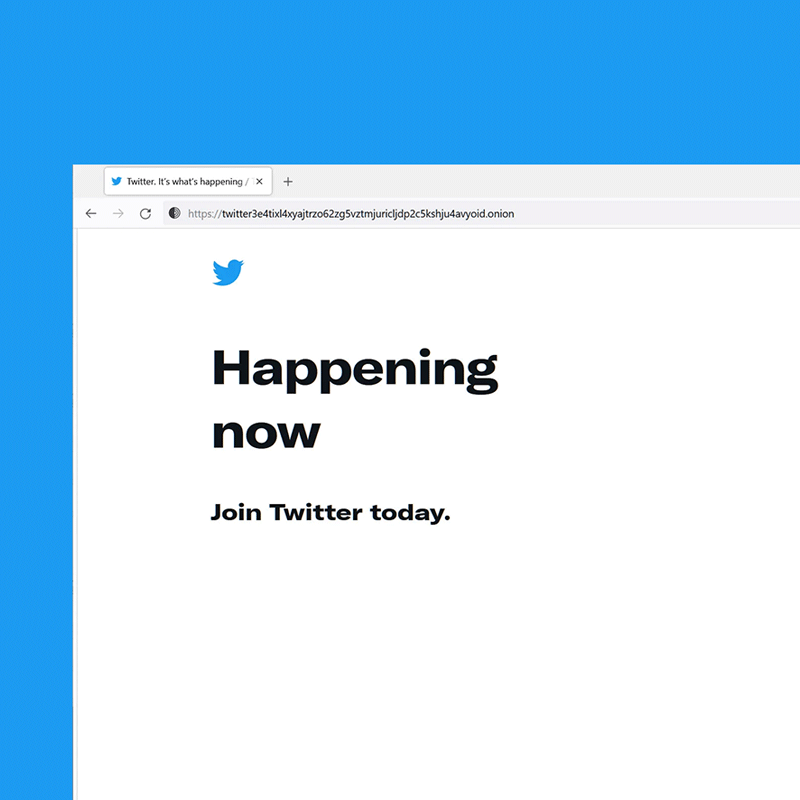
The internet is meant to be a decentralized place. Yet, there are too many parties involved.
Most notably, governments can impose laws on what types of contents can be shown to their citizens. For example, they can order their regulators and Internet Service Providers (ISPs) to only allow information the officials wish their citizens to see.
Twitter, the microblogging platform, is meant to be a place where free speech happens.
It is meant to be a place on the web where people can speak their voice, talk about their concerns, deliver their opinions, complaint, and more.
But a number of governments are blocking Twitter because of those purposes.
Many countries consider Twitter a threat, fearing that the platform can help bring people together to fight against their own governments, creating new activists and oppositions, and more.
Because of this, many privacy-concerned individuals and entities dislike the idea.
In a long-overdue update, Twitter is finally making itself available on Tor.
This way, Twitter users living in countries or regions where the platform is blocked, can simply use the Tor browser to gain access to Twitter.
What this means, Twitter is finally censor-free.
By running its service on Tor, no government can block it anymore.
The launch of this project comes at the time when Russia begins to isolate itself from the rest of the world.
To prevent the free flow of information about the Russian invasion of Ukraine, Russia has began blocking its citizens' access to Western platforms, including Twitter.
With Twitter being accessible via Tor, people in Russia can continue accessing the service and gaining information about the conflict and other worldwide events.
Twitter's .onion URL was announced by security engineer Alec Muffett:
I'm delighted to have assisted @Twitter engineers in their adoption of #OnionServices & #OnionNetworking from @TorProject — providing greater privacy, integrity, trust, & "unblockability" for people all around the world who use @Twitter to communicate.https://t.co/LlkXyJJOiB pic.twitter.com/7waJ4ZWm4s
— Alec Muffett (@AlecMuffett) March 8, 2022
Alec Muffett, a cybersecurity researcher with a long history of working with the Tor network, was behind the project.
According to him, Twitter’s Tor service is based on a version of the Enterprise Onion Toolkit (EOTK), a tool that Muffett designed to help website owners add a .onion URL for their site’s domain in a matter of minutes. But in Twitter's case, the EOTK has been customized to meet Twitter’s "extraordinary production requirements."
The low-key announcement of Twitter's Tor website is meant to prevent an unnecessary uptick in traffic. Let those who wish to use Twitter in privacy, learn about this themselves.
"So why am I first(-ish?) to tweet about it? From past experience with the Facebook and BBC Onion sites, any sufficiently large announcement leads to a load-spike, and given that @TwitterSafety has 3.6 million followers it would not be wise in a time of global crisis," he said.
The Tor Project allows users to download a customized Firefox browser that can be used to browse the web anonymously and access special .onion domains that are only accessible via Tor.
The project is especially useful as it allows users to bypass government censorship and continue accessing websites that are normally blocked in their country.
And here, Twitter being available on Tor means that the platform is finally optimized for the privacy-protecting and censorship-evading network.
Following the news, the platform has also updated its page about supported browsers.
"In order to ensure the best possible Twitter experience, including all the latest features and security updates, please make sure your browser and operating system are up-to-date," Twitter said.